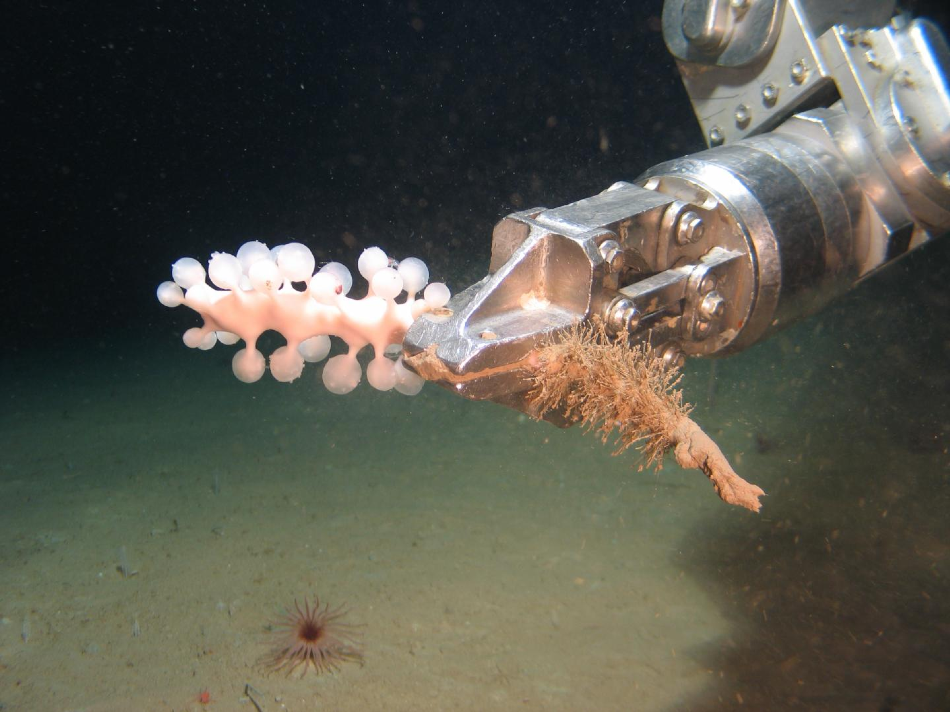Apr 16 2020
The oil and gas industry often uses underwater robots to examine and maintain offshore structures.
 An ROV fitted with an arm for collecting marine samples. Image Credit: AIMS.
An ROV fitted with an arm for collecting marine samples. Image Credit: AIMS.
An Australian-led study has shown that the same robots could be tuned to collect additional scientific information, optimizing the capabilities of environmental and resource management.
Under the guidance of Dianne McLean and Miles Parsons from the Australian Institute of Marine Science (AIMS), researchers from all around the world have been pushing for closer associations between scientists and industry to optimize the use of underwater robots, called remotely operated vehicles (ROVs).
The study was reported in the Frontiers in Marine Science journal and describes the finding of a variety of instruments that can be easily incorporated into the craft, such as sample collectors, audio recorders, and cameras.
The data collected by the researchers will considerably improve the industry and scientific insights on the effect of marine infrastructure, leading to advantages for regulatory compliance and ecological management.
This is a real win-win. With some low-cost engineering and operational tweaks, industry and science can use ROVs to fuel new scientific discoveries. For instance, we could better understand the influence of structures such as platforms and pipelines in marine ecosystems - to the mutual benefit of the resource company and the environment.
Dr Dianne McLean, Fish Ecologist, Australian Institute of Marine Science
Recent research follows a previous study in which tuned underwater vehicles were used to investigate fish populations near a platform on the North West Shelf, which is located 138 km offshore from Dampier.
In May 2020, the research group from AIMS will expand the research by collaborating with Santos to make use of ROVs to investigate marine life near shallow water platform jackets.
Every year, the vehicles are frequently utilized to examine thousands of industrial subsea structures all over the globe. These crafts function in shallow water, as well as at depths below 3000 m.
McLean, a fish ecologist and specialist in underwater video systems, and Parsons, an acoustics expert, collaborated with researchers in Australia, Scotland, England, and the United States to find out the possible economical methods to adapt regular work-class ROVs to extend data-collecting potential.
Such techniques involve the incorporation of additional cameras, sensors, sample collection devices, as well as acoustic receivers and transmitters.
By partnering with experienced research scientists, industry can improve the quality of its ROV-derived data.
Dr Miles Parsons, Acoustics Expert, Australian Institute of Marine Science
According to Dr McLean, the additional data, and the spirit of collaboration through which the data was collected, could be especially useful in environmental management and complex engineering difficulties like decommissioning huge structures at the end of their service life.
From an industry point of view. these small additions to ROVs and their use for scientific surveys has the potential not only to improve environmental management, but also to facilitate more informed engagement with external stakeholders such as regulators and the public.
Dr Miles Parsons, Acoustics Expert, Australian Institute of Marine Science
The study reveals that small improvements to the ROVs and the way they are employed at present could offer considerable advantages to science and resource companies in the long run.